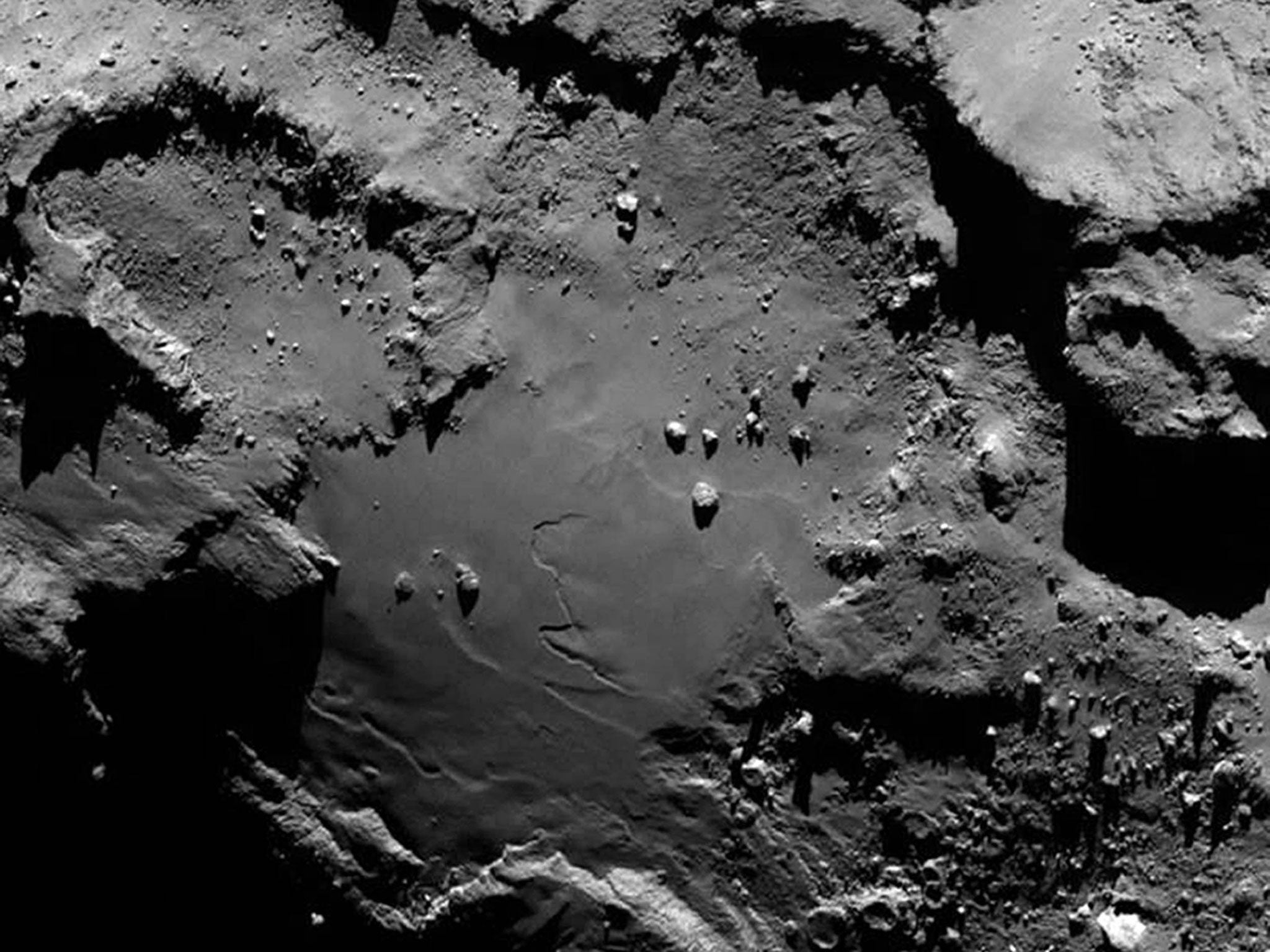Rosetta mission comet's battered surface 'is more hospitable for life than polar regions'
Astronomers say 67P/Churyumov-Gerasimenko may support micro-organisms

Your support helps us to tell the story
From reproductive rights to climate change to Big Tech, The Independent is on the ground when the story is developing. Whether it's investigating the financials of Elon Musk's pro-Trump PAC or producing our latest documentary, 'The A Word', which shines a light on the American women fighting for reproductive rights, we know how important it is to parse out the facts from the messaging.
At such a critical moment in US history, we need reporters on the ground. Your donation allows us to keep sending journalists to speak to both sides of the story.
The Independent is trusted by Americans across the entire political spectrum. And unlike many other quality news outlets, we choose not to lock Americans out of our reporting and analysis with paywalls. We believe quality journalism should be available to everyone, paid for by those who can afford it.
Your support makes all the difference.A comet shaped like a duck has already made history for being the first to be landed on by a spacecraft. Now scientists believe the comet, known as 67P/Churyumov-Gerasimenko, could be home to life.
Leading astronomers who have been studying the findings of the European Space Agency’s Rosetta spacecraft and Philae lander believe the comet could support micro-organisms. They go as far as to suggest that the comet is more hospitable for life than our own polar regions.
They argue that the presence of such organisms is one way of explaining the comet’s “distinct and unexpected features” on its body mass, including a black crust, underlying ice, flat-bottomed craters, and a surface “peppered with mega-boulders”.
Dr Max Wallis, from the University of Cardiff, and Professor Chandra Wickramasinghe, director of the Buckingham Centre for Astrobiology, argue that the comet’s features are consistent with a mixture of ice and organic material that occur under warming from the Sun – when “active micro-organisms” can be supported.
Dr Wallis is due to present his ideas to the Royal Astronomical Society’s National Astronomy Meeting in Llandudno today. He will tell fellow scientists that the comet’s crater lakes are refrozen bodies of water covered in debris, and its large parallel furrows relate to movement on the body that generates fractures in the ice below.
The Royal Astronomical Society (RAS) explains that both astronomers have created a “model that suggests micro-organisms probably require liquid water bodies to colonise the comet and could inhabit cracks in its ice and snow”.
Dr Wallis said: “Rosetta has already shown that the comet is not to be seen as a deep-frozen inactive body, but supports geological processes and could be more hospitable to micro-life than our Arctic and Antarctic regions.”
These organisms reportedly contain anti-freeze salts, which are able to adapt to temperatures as low as -40C. Areas of the comet lit by sunlight have come close to this temperature since it has been under observation, when it travelled within 500 million kilometres from the Sun and weak gas emissions were evident, according to the RAS.
Dr Wallis and Professor Wickramasinghe believe that further evidence for life is that the spacecraft detected “abundant complex organic molecules on the surface of the comet”, captured by infrared images taken by Rosetta.
Professor Wickramasinghe said: “If the Rosetta orbiter has found evidence of life on the comet, it would be a fitting tribute to mark the centenary of the birth of Sir Fred Hoyle, one of the undisputable pioneers of astrobiology.”
Rosetta and Philae have been used to observe the comet since September last year and Philae landed on the comet, first discovered 1969, in November last year. It was earlier in 2014 that water vapour was first detected coming from the surface by Rosetta and since then Churyumov-Gerasimenko has been at the centre of astro-biological research. In December, scientists reported that the composition of the water vapour is very different to that found on Earth.
The RAS findings could serve to support the theory that life on Earth may have first been initiated by comets. The “panspermia” theory suggests organic materials brought to Earth billions of years ago during a barrage of comets could have provided the compounds needed to evolve into living matter.
Glitch silences Pluto probe ‘New Horizons’ is due to fly past Pluto after a nine-year journey
Nasa scientists were working to revive the New Horizons spacecraft yesterday after it suffered a computer malfunction just nine days before it was due to fly past Pluto.
The $700m probe has been barrelling toward the dwarf planet and its primary moon, Charon, since January 2006. On Saturday, an unknown glitch caused New Horizons to switch to a backup computer, which triggered an 81-minute break in radio communications with mission controllers at the Johns Hopkins University Applied Physics Laboratory in Laurel, Maryland.
“Full recovery is expected to take from one to several days,” the space agency added. “New Horizons will be temporarily unable to collect science data during that time.” The work is complicated by the four-and-a-half hours it takes to send a set of signals to the spacecraft, which is nearly 3 billion miles from Earth.
Like Nasa’s early Mariner, Pioneer and Voyager missions that first explored the solar system, New Horizons is designed to conduct science on the fly as it passes within 7,800 miles of Pluto on 14 July.
Pluto’s gravity is so weak that it would take a huge amount of fuel for a spacecraft to brake and put itself into orbit. New Horizons spent most of its nine-year journey to Pluto in hibernation. It was revived in January to begin collecting navigation and science data.
Join our commenting forum
Join thought-provoking conversations, follow other Independent readers and see their replies
Comments